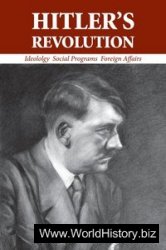Dealing with marginals was far from the minds of the new Bolshevik rulers in 1917. Their immediate concern were the most dangerous former people such as White Guards, Mensheviks, Social Revolutionaries, and intellectuals. By the mid-i93os, they had been dealt with; attention could turn to marginals and former people.3
It mattered a great deal to Stalin where his enemies were located. Only some fifteen percent of the population lived in cities and it was important to have the right "human material” to work in industry. The Bolsheviks' own experience showed that control of one city, Petro-grad, brought them to power in 1917. Peasants resisting Soviet power in the countryside were less dangerous if located outside the area of "continuous collectivization.” The most dangerous peasants were executed, imprisoned, or deported during the dekulakization campaign of 1930-1932. Their removal brought the heartland of agriculture under the control of Soviet power.
The cities were another matter. There were alarming signs that the cities were being overrun by undesirable elements. Following the deportations in the early 1930s, peasants fled to cities along with other undesirables such as religious officials and supporters of the old regime. In less than a decade, the Soviet Union became an urbanized society as people fled the countryside, where work was hard and unrewarding and life was dangerous for anyone harboring anti-Soviet ideas. Moreover, the cities were already full of marginals who were slowing down production and infecting honest workers with their bad habits.
It was the head of the police and deputy head of the OGPU (the predecessor to the NKVD), Genrikh Iagoda, who was charged with the campaign to clear the cities of such undesirables. Under Iagoda's direction, the police had routinely rounded up marginals, maintained card catalogs on them, and kept them under surveillance. After some debate within police circles, it was decided that prostitutes be also kept under surveillance (despite the fact that there were so many of them) because they were valuable informants.
Faced with burgeoning cities, teeming with undesirables, a state decree of December 27, 1932, ordered the OGPU to introduce a "passport system.” Henceforth, citizens had to be registered and be issued passports to live in the most important metropolitan and industrial centers. Those not having the right to passports were to leave voluntarily and quickly. If they did not, they were to be arrested for violating the passport regime.
On January 5, 1933, Iagoda's OGPU issued Decree No. 009 "About Chekist measures for introducing the passport system.” As the first step toward cleansing the cities. Iagoda ordered the preparation of lists of anti-Soviet elements for removal from the cities. The announcement of passportization caused some 400,000 to flee the cities in the first half of 1933 alone. They did not wish their pasts to be examined by the OGPU or police. Many had purchased forged papers that would not withstand careful scrutiny. Others remained behind, hoping to blend in. By August of 1934, twenty-seven million passports had been issued in the Russian republic alone. Three to eleven percent of applicants were denied passports; most undesirables probably did not even bother to apply.4




 World History
World History









